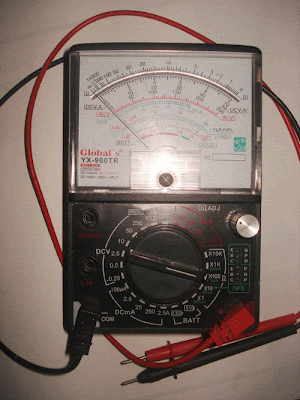We do not have any cooking appliances that could help us in our kitchen, music that can keeps us entertained or any electronic components that we can rely on our daily life. Everything would be done manually which is tedious and more time spent all just to get the job done.
We are so really lucky today that the innovation of technology makes our daily life easy and simple. All we just have to do is to press buttons and the machines will do all the hard work for us. As a good example is the innovation of mobile or cellular phones which is the best gadget used to communicate other individuals particularly those that are far from your location. But in the past, they used post mail which could take several days for your letter to be received by your recipient.
Look Around You

Right now, try to look around you and identify every electronic components from your surroundings. I am pretty sure that there will be more than just one. If you are at home, you may have a Television Set, Radio, Microwave Oven, Refrigerator and etc... At school, you may have your laptop computer and calculator. And where ever you are, there is your personal mobile phone that some can't even live without it.
Mobile Phones, iPod and Tablets
When mobile or cellular phones got popularly introduced with the main purpose of providing immediate communication for all users, this technology made a huge leap in just a matter of few years where iPods and Tablets followed through. Now, through these amazing and sophisticated gadget, we have limitless access to various forms of media such reading this blog, watching videos, listening to your favorite music to purchasing product and services.

Wi-Fi and the Internet

Another one of the great breakthrough of our technology on this age of our generation is the internet. The internet is the one responsible for transferring data from the servers to your computer or vice-versa. This is why you can send private messages on your FaceBook or email accounts.
As for the Wi-Fi, this is another form of data communication but in its local form. Local means, the connection is limited to certain users particularly the owner and allowed users that he granted permission for access. Wi-Fi is actually a device that is more commonly used to distribute or share internet access to others via wireless means.
Digital Sound or Music

The invention of radios was already been a long time ago but all throughout those period of time, the room for improvement never stopped. Now, you can literally listen to all of your favorite music through a small device that you can carry with your hand or place it inside your own pocket. As compared to those old and traditional cassette tapes containing just a few number of songs, MP3 or MP4 portable players, smartphones and iPods can store hundreds or even thousand of sound tracks.
Digital Camera
Another electronic device that we commonly use in our daily live is a camera. I can say that this technology has an importance since it can actually preserve those unforgettable memories of the past. If you got kids then those photos you took from their younger age would be a treasure of the future. In the past, not so many people can own a camera because of its expensive price. You can also take very limited shots so errors or mistakes of capturing a photo must be avoided. Thankfully, we are so lucky today due to the invention of digital cameras. Through this device, you can take a lot photo shoots then choose the best ones that you want to keep and delete those that you don't like.

Smartphones, mobile phones, iPods, tablets and other similar devices now have built-in cameras (photo and video) in them. And currently, they are all competing in terms of providing the best or highest quality of resolution.
Food Industry

Food is actually a lot more important than electronics in our daily life. Without food, we won't be able to survive and thrive into this world. In the past, there was a huge issue with the food supply around the world due to the fast growing rate of human population. But through technology, machines got invented where we manage to cope up with those food demands. Today, these machines are now completely automated requiring less human intervention.
Science and Health

In the field of science, electronic technology is quite heavily used. All scientists actually rely on these technology allowing them to perform further research and observation that has never been done before. As for the health industry particularly at the hospital, there are a lot of machines (such as in the operating room) to help doctors and nurses be able to cure health problems.
As a conclusion, electronics has now become a part of our daily life on this current generation that we are living in.





















